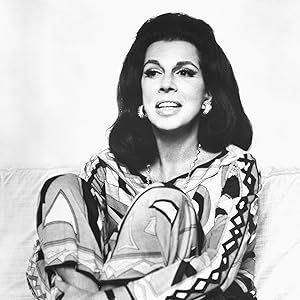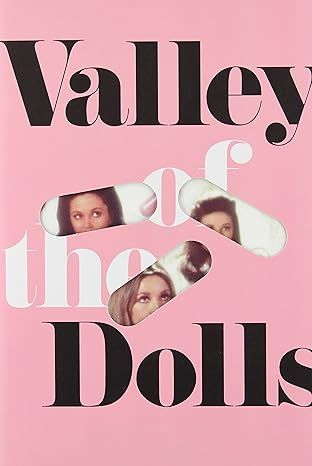
Valley of the Dolls
4.3 out of 5
5,327 global ratings
The 50th Anniversary Edition of Jacqueline Susann's All-Time Pop-Culture Classic
The perfect gift for any Valley fan or your favorite Doll, featuring a new cover design introduction by Simon Doonan never-before-seen archival material an essay from Jackie, My Book Is Not Dirty!”
At a time when women were destined to become housewives, Jacqueline Susann let us dream. Anne, Neely, and Jennifer become best friends as struggling young women in New York City trying to make their mark. Eventually, they climb their way to the top of the entertainment industry only to find that there’s no place left to go but down, into the Valley of the Dolls.
About the authors
Jacqueline Susann
Jacqueline Susann is a publishing and pop-culture legend. Her debut novel, Valley of the Dolls, published in 1966, has sold over 31 million copies in thirty languages. Susann was the first author to have three consecutive #1 New York Times bestsellers, following Valley of the Dolls with The Love Machine and Once is Not Enough. She was married to her beloved husband, producer Irving Mansfield, until her death on September 21, 1974, after a courageously fought battle with breast cancer. She was fifty-six.
Read more
Reviews
Amazon Customer
5
Exceptional!!!
Reviewed in the United States on March 25, 2024
Verified Purchase
I have always wanted to read this book & finally did, didn't want to put it down!!! Definitely keeps you engrossed!
2 people found this helpful
Kindle Customer
5
a return
Reviewed in the United States on May 23, 2024
Verified Purchase
read this over again after 20 years. still fascinating. I have gone through similar battles turned to alcohol. sober 16 years now.
Bibbitzmom
5
Fabulous Trash
Reviewed in the United States on November 8, 2023
Verified Purchase
This is not fine literature but it's a fun read. The movie was set in the wrong time period, and the book is perfect for when it was set. The three girls trying to make their fortunes is a time tested trope, and this is one of the best examples. Anne, the cultured Bostonian, Jennifer, the beauty and Neely the talented mess. When this first came out, there was a lord of speculation about who was based on whom. After reading a lot of background stories, I've decided I don't much really care. It's fun to guess but it's better to just take the characters at face value. Jackie Susann knew this world, and I can imagine that when it first was published it was shocking. Now, it's just a glimpse into a world that's gone.
Read more
9 people found this helpful

Plain Jane
4
Classic Allegory with a Modern Twist
Reviewed in the United States on June 17, 2012
Verified Purchase
The thing that frustrates me about this book is also what I love - The allegory and the emotional blindness of the characters. Warning, spoilers!
Anne is living a real "three strikes and you're out" psychological baseball game. She seeks excitement and love. She blows it with Allen, who's loaded and crazy about her, who offers all kinds of fun, whatever she could want. Yet she blows it because it's too easy. When Lyon finally wants to marry her and be with her, since he wants to live in her simple home town, it isn't good enough. She blows it. Then, when she has Kevin, who agrees to marry her and wants to take her around the world, it's not good enough because he's offering it too easily, and Lyon stumbles back in the picture. Yet, she never really does anything on her own; she just piggybacks off the success of others and never grows out of being a spoiled, cossetted teenager.
Neely is just as emotionally crippled. She finds a man to love her, like she wants, but Neely's vision of love from the start means being with a man that's more successful. As her fame grows, her love wanes for her men. Yet she demands constant attention. She's a true diva, and she can never hold onto anything. Neely does not know how to love, only how to be addicted. From the start, we see she's selfish and incapable of being considerate of others. She never learns, and even though the novel doesn't exactly indicate how Neely's future will look, we can guess, and it's not pretty.
Jennifer perhaps was the only really good, likable character in the novel. However, she's ultimately betrayed by her own body that she's relied on. Perhaps, if she'd learned to make emotional connections, we would have seen a happier ending.
I wonder how the novel would have turned out if Anne would have tried to get to know Allen as a person, if Neely would have let her first man be a man and stayed in NYC, and Jennifer would have told her mother to stuff it and gone to live the life SHE wanted. Would have been less interesting, but I can't help wishing one girl would have gone straight and come to her senses. It's a fun novel and a great read.
This book does not discourage success, but it does discourage riding on other people's backs to get there, and is a great lesson about using people and stepping on people, that it still hurts you even if you have good intentions. It's a tale about what happens when you forget about the humanity of the people you're using, that in that, you lose your own humanity. It's a beautiful, sad, timeless story, and I can't wait to read more Susann!
Read more
3 people found this helpful
Lisa Shea
3
60s Story a Moralistic Anti-Success Tale
Reviewed in the United States on April 27, 2005
Verified Purchase
Written in 1966, this book came out at the high season of wild love and sexual awakening in the US. It's all about three young women who go to New York starting just after World War II and who use their beautiful bodies to skyrocket to fame and fortune. They realize that the high life isn't all it's cracked up to be, as they use drugs, booze, sex to maintain their perfect worlds. Disaster results.
Valley of the Dolls is said by many to be the top selling fiction book of all time. Compared to many of the other over-sex-filled books that made this list, Valley of the Dolls is actually relatively tame. When the story begins in 1946, the main characters are all young and at different stages of innocence. You have Anne, a sweet 20 yr old Massachusetts girl who dreams of passionate love and family, after she has a career for herself. She's happy being a secretary. You have Neely, a sweet 17 year old vaudeville dancer / singer who works with her family and wants to be a showbiz girl while she finds a guy to marry and have kids with. And finally you have Jenny, who is 25 and whose mom pushes her to marry rich. She's the only non-virgin - she married a European noble in hopes of cash, but divorced him quickly when she found out he was actually poor.
So for the first 100 pages or so (out of 442), you just get setup. Anne is incredibly innocent, with parents who want her to simply marry a local boy and settle down. Neely is a young sparker, who leaps to every new challenge with energy and enthusiasm. Jenny is resolute in her aim to make money, keeping her body well oiled and cared for to reach her goals. The three become roommates as they each persue their goals. All three want to marry well, that is their end goal.
Ironically of course, when they draw close to their goals they find they want more. Neely does in fact marry the guy she chases after - but when she drags him out to Hollywood with her, she bores of him quickly and wants a divorce. Jenny marries a rich singer despite the objections of the singer's sister - but divorces him when he sleeps around and she realizes he has a genetic mental problem that would affect their kids. Anne turns down a millionare to stay with a writer she loves passionately - but he abandons her to focus on his writing efforts. She keeps pining after him even while she moves on to other affairs.
And so it goes. Anne becomes a cosmetics girl cover-girl, and of the three is the sanest. She sleeps with the boss and plans on marrying him in a while. She's not hooked on drugs. But Jenny and Neely are both addicted to uppers and downers by now. Neely has destroyed her career several times over by being a prima-donna. Her second husband divorces her and she never spends any time with her kids. Jenny finally finds a rich senator to love - and dreams of marrying him and having kids. But breast cancer and uterine issues hit, and she doesn't trust the senator to stay with her with these problems. Life unravels.
On one hand, the characters tend to be on the cardboardy side. There is the super-naive Anne, who believes at face value that the millionaire is poor, that the Ethel Merman-style Broadway Star is really sweet and kind, and so on. She clings to her belief in true, soulmate passionate love and lets go her hopes for family and home as a result. There's the fresh-faced Neely who claims she only wants a family and kids, and would quit her career to focus on the family - but as soon as she gets fame, she adores it. But she loses her fame because of her nose-up attitude and pill-taking. Jenny just keeps searching for a sugar daddy that can also give her kids, but just when she thinks things are set, his fascination with her body and her illness make it seem like a lost cause.
The guys are not much better. You have the rich my-way-or-the-highway millionaire. You have the playboy writer who runs off to be on his own. You have the sex-only-simpleton who does what he's told by his sister. You have countless guys who only want a mistress or a one-night-stand. And then you have a few father figures. You have very few real "partners" in life.
On the other hand, when you look at the other top sellers like the Carpetbaggers or God's Little Acre, this book has remarkably little sex. The virgins stay virgins for a long while, until they hook up with true loves. Yes, Jenny had a lesbian affair in Europe for the typical tittilation factor. Yes, you hear about Neely's second husband having homosexual lovers, but there is very little real sex talk. You know that Jenny trades sex for fur coats, but it's more about the fur coats than the sex. What is more the focus of the book is the way the womens' goals keep changing - and how they sabotage their own lives. Neely especially blames everyone else around her for her unhappiness, when it's pretty clear that it is her own warped focus that does it.
I can definitely see why this appealed to a 60s audience of women. They were all rebelling against the get-married-have-kids mantra, they wanted glamour and excitement. But they also knew that the choice was a risky one. The book clearly showed women who avoided the family-kids route and reached that glamour, and who were not really happy as a result. So on one hand, women got to fantasize about the cool prestigious New York restaurants, the Broadway hits, the rich boyfriends. But on the other hand, women saw the misery and pain involved in that high-profile life, and felt better about their own more quiet worlds.
For a more modern audience, it's a little more tough. This isn't the Carrie-Samantha New York smart single girls situation. All three girls long for a guy to solve their problems. Jenny wants a rich guy, and kids. Anne wants a loving guy, and kids. Neely just wants a family guy. The Sex-in-the-City girls get together, they support each other to become better, balanced individuals. It seems like the Valley threesome help each other to get pills, and rarely speak out against bad relationships. They only step in for an intervention when things are completely screwed up. They make completely bad decisions for themselves, with maybe only Anne being at least mostly-sane. This is more a warning about "the perils of high living" than a real story about the troubles of balancing family and career.
Sure, we can see traces of our own desires in the various women. We want romantic love, like Anne. We want financial stability, like Jenny. We want general family contentment, like Neely. But the women are very one-sided and simply not very bright. It's a real shame to say these are what women are like, or how women handle success. And of course, the fact that all are incredibly gorgeous and solely use their bodies to achieve their aims is not stirring. They're constantly praised by men for being sexy. That seems to be all that guys care about. The women spend their time oiling their breasts and putting on make-up and dressing fancy, to be the proper Arm Candy. If they get money, they turn it over to men to do the investing. Wouldn't want to worry their silly little heads about money.
So in general, I appreciate this was very liberating and educational for 60s women - but it is more cardboard and simplistic for modern times. I really do find a great comparison between this and the Sex-in-the-City crew. Both have sexy women in New York City. But in this book, the sexy women rely on sexy bodies to catch them a husband of their desired shape, and use pills and drinking and plastic surgery to get their aims. It is shown to be literally impossible to balance a family and a career. That may have been a lesson that Sixties women sadly accepted - but it's one we know it not true in modern times. And hopefully we know better than to focus on a hot body as the main way to find a long-lasting partner in life!
Read more
50 people found this helpful
Best Sellers

The Great Alone: A Novel
4.6
-
152,447
$5.49

The Four Winds
4.6
-
156,242
$9.99

Winter Garden
4.6
-
72,838
$7.37

The Nightingale: A Novel
4.7
-
309,637
$8.61

Steve Jobs
4.7
-
24,596
$1.78

Iron Flame (The Empyrean, 2)
4.6
-
164,732
$14.99
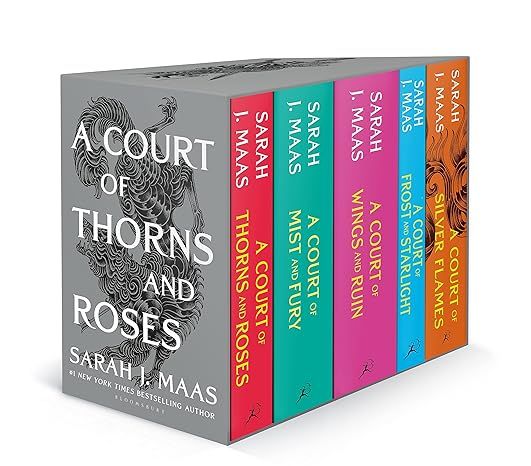
A Court of Thorns and Roses Paperback Box Set (5 books) (A Court of Thorns and Roses, 9)
4.8
-
26,559
$37.99

Pretty Girls: A Novel
4.3
-
88,539
$3.67
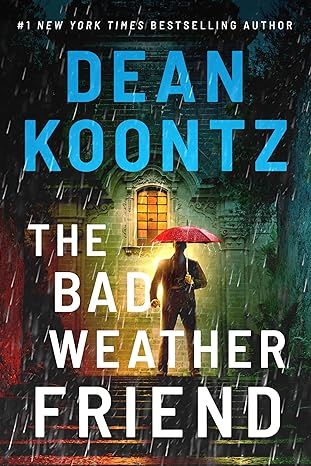
The Bad Weather Friend
4.1
-
34,750
$12.78

Pucking Around: A Why Choose Hockey Romance (Jacksonville Rays Hockey)
4.3
-
41,599
$14.84
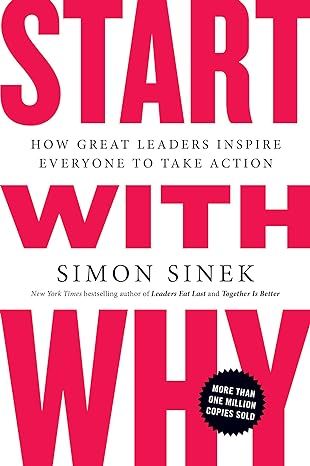
Start with Why: How Great Leaders Inspire Everyone to Take Action
4.6
-
37,152
$9.99
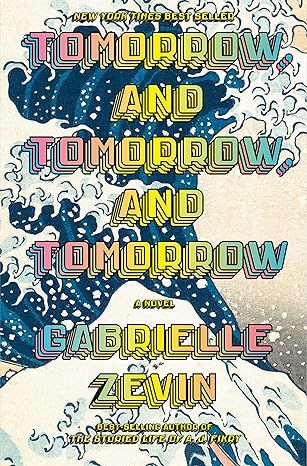
Tomorrow, and Tomorrow, and Tomorrow: A novel
4.4
-
95,875
$13.99
